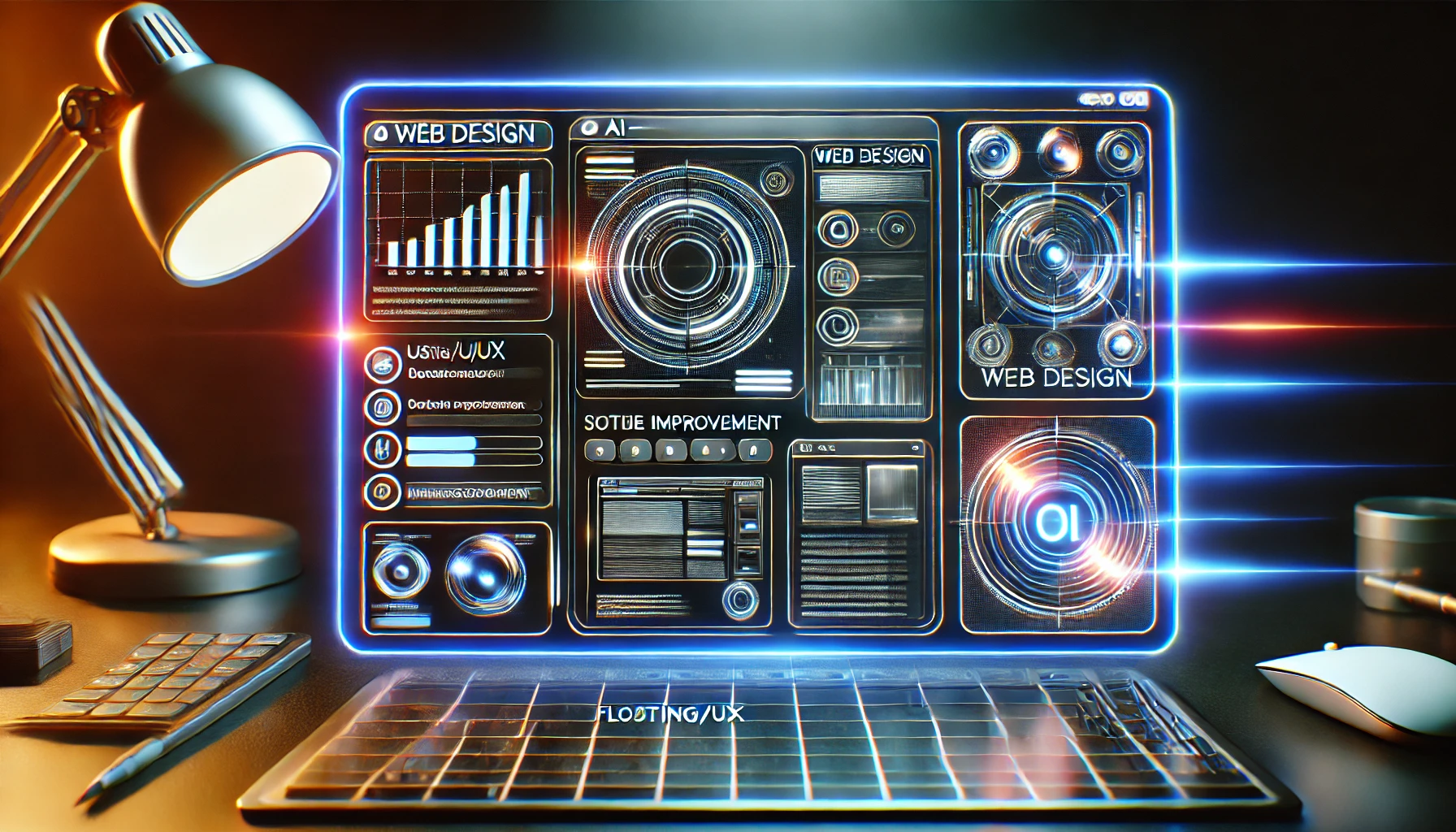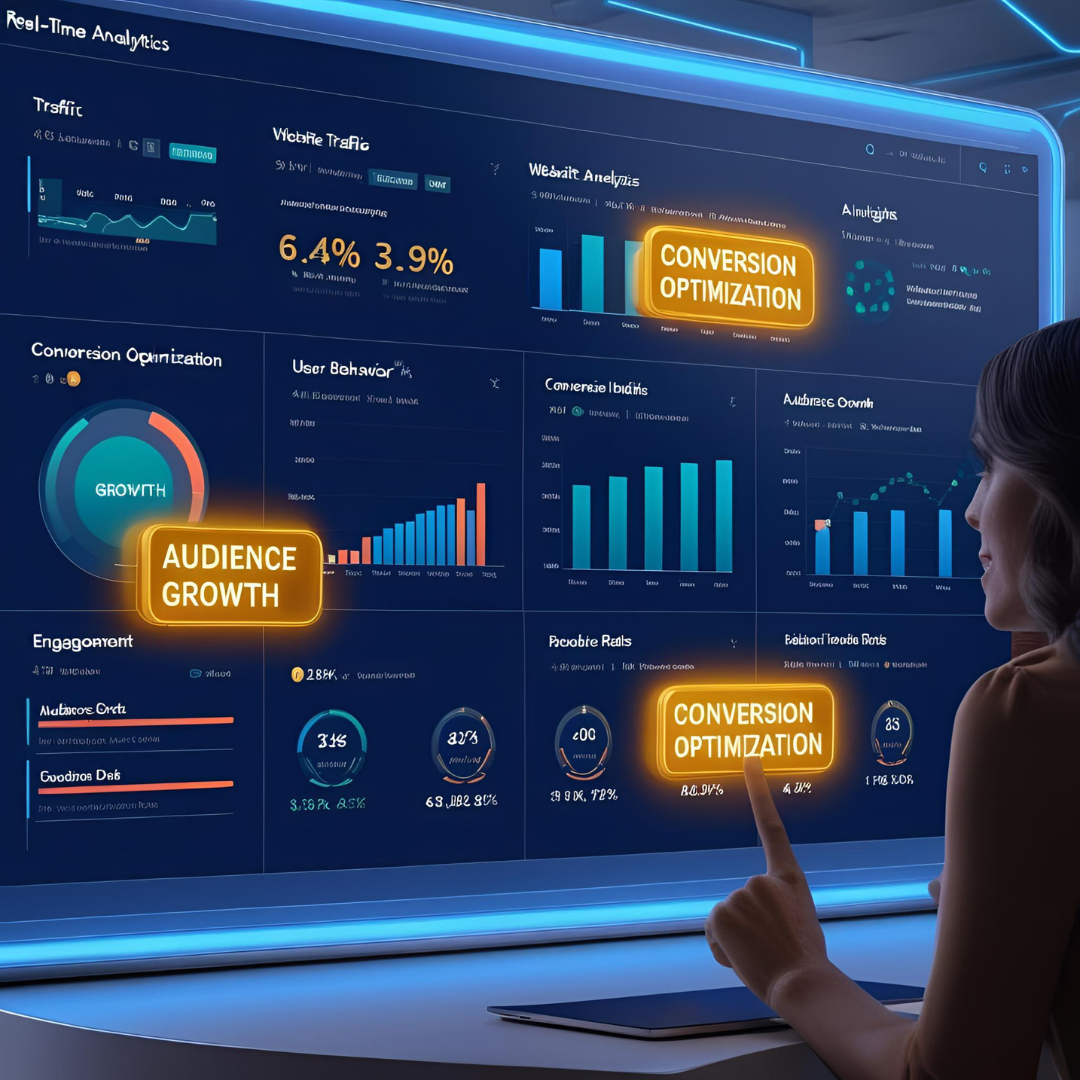The Future of AI in Website Design: How AI is Revolutionizing UX & UI

Introduction
The digital landscape is evolving rapidly, and the role of artificial intelligence (AI) in website design is becoming more significant than ever. With an ever-growing demand for personalized, engaging, and high-performing websites, AI is now at the forefront of innovation. In this blog post, we’ll explore how AI is revolutionizing the world of web design by enhancing both UX (User Experience) and UI (User Interface). We’ll dive into current trends, innovative technologies, and the practical applications of AI in designing websites that not only look good but also perform exceptionally well.
The Evolution of AI in Website Design
A Brief History of AI in Design
The journey of AI in the realm of design started with basic automation—tasks like resizing images, generating color palettes, and even layout suggestions. Early design tools offered limited automation, but today, AI has evolved to analyze user behavior, predict design trends, and create dynamic layouts tailored to specific user needs.
Technological Breakthroughs
Recent breakthroughs in machine learning, natural language processing, and computer vision have opened new doors for web design. Tools powered by AI now understand design aesthetics, learn from vast amounts of data, and can even predict what users will find appealing. This capability is changing the way designers approach both UX and UI, enabling a more data-driven and user-centric design process.
AI-Driven UX Enhancements
Personalization Through Data Analysis
One of the primary ways AI is transforming UX is by enabling unprecedented levels of personalization. By analyzing user behavior—such as click patterns, scrolling habits, and navigation routes—AI systems can tailor content and layout in real-time. For example, an e-commerce site might use AI to present personalized product recommendations based on past purchases and browsing history.
Enhancing User Engagement
Personalization doesn’t just improve aesthetics; it significantly boosts engagement. When users encounter a website that adapts to their needs, the overall user experience is elevated. AI tools can test different versions of a page (A/B testing) and use the winning design to ensure the most engaging user experience possible. The result is a website that feels intuitive and responsive to each visitor.
Case Study: Adaptive Navigation Menus
Consider a scenario where a website’s navigation menu changes dynamically based on the user’s behavior. AI can track which sections of the site are most frequently accessed and then prioritize those links in the navigation menu. This type of adaptive design reduces user friction and leads to a smoother browsing experience.
Revolutionizing UI with AI
Automated Design Systems
Gone are the days when web design was solely a manual process. AI-powered design systems now offer automated solutions for creating consistent and visually appealing interfaces. These systems can generate layouts, select color schemes, and even suggest typography that aligns with the brand’s identity—all in a fraction of the time it would take a human designer.
Dynamic Content Generation
Another groundbreaking aspect of AI in UI design is dynamic content generation. Imagine a website that adjusts its UI elements based on real-time data. For example, during a high-traffic period, a news website might automatically streamline its layout to prioritize speed and clarity. AI enables such adaptability, ensuring that the user interface is always optimized for current conditions.
Real-World Example: AI and Elementor
Platforms like Elementor, a popular WordPress page builder, are integrating AI-driven features that assist designers in creating engaging interfaces. With AI-powered suggestions, Elementor can recommend layout changes, optimize image placements, and even propose design elements that improve overall usability. This fusion of AI and traditional design tools is setting a new standard in the industry.
Tools and Technologies Shaping the Future
AI Design Assistants
Modern AI design assistants are becoming invaluable in the web design process. These tools not only speed up the creation of website mockups but also offer predictive insights on user interactions. By integrating these assistants into their workflows, designers can focus on creativity while AI handles the data analysis and routine tasks.
Emerging Trends in AI-Driven Web Design
As AI continues to mature, several trends are emerging:
Voice-Activated Interfaces: With the rise of smart speakers and voice assistants, AI is enabling the integration of voice commands into web interfaces, making navigation even more intuitive.
Augmented Reality (AR) Experiences: AR, powered by AI, is beginning to merge with web design, offering users immersive experiences directly in their browsers.
Predictive UX: AI’s predictive capabilities are being harnessed to foresee user needs before they even arise, resulting in proactive adjustments to website content and layout.
Integration with Other Technologies
AI’s impact on website design is further amplified when integrated with other cutting-edge technologies. For example, the combination of AI and Big Data allows for the continuous optimization of websites based on vast amounts of user interaction data. Similarly, integrating AI with Internet of Things (IoT) devices can create responsive environments that adjust to user behavior in real-time.
Implementing AI in Your Website Design
Getting Started with AI Tools
For website owners and designers eager to harness AI’s potential, several steps can help facilitate the transition:
Audit Your Current Website: Identify areas where AI-driven personalization or automation could have the most impact.
Select the Right Tools: Evaluate popular AI-powered design tools that integrate well with your existing platforms (e.g., WordPress plugins like Elementor with AI features).
Plan for Integration: Create a roadmap for integrating AI into your design process. This might involve a phased approach, starting with simpler features like layout suggestions and gradually incorporating more advanced personalization.
Best Practices for Successful Implementation
User-Centric Design: Always prioritize the user. While AI can provide suggestions, it’s crucial to maintain a human touch in understanding your audience.
Data Privacy and Security: As you incorporate AI, ensure that your data collection methods comply with privacy regulations. Users value transparency about how their data is used.
Continuous Testing and Optimization: AI systems improve over time. Regularly test new features and adjust based on user feedback to ensure your website remains optimized.
Overcoming Common Challenges
While AI brings many benefits, it also poses challenges such as:
Complexity: Implementing AI solutions can be complex. Start with manageable projects and scale up as you become more comfortable.
Cost: Advanced AI tools may require significant investment. However, many affordable options are available that can provide incremental benefits.
Integration Issues: Ensuring that AI tools integrate seamlessly with your existing systems may require technical expertise. Consider partnering with experts or leveraging community support for popular tools like Elementor.
The Future Outlook
What Lies Ahead for AI in Web Design?
The integration of AI in website design is just beginning. As technology continues to evolve, we can expect even more sophisticated tools that not only optimize UX and UI but also predict future trends. This evolution will likely lead to:
More Interactive and Immersive Experiences: Websites that adapt in real time to user behavior, making the online experience more engaging.
Greater Personalization: Hyper-personalized websites that understand and predict user needs, leading to higher engagement and conversion rates.
Increased Automation: From design to deployment, AI will automate more processes, reducing manual workload and allowing designers to focus on creative strategy.
Embracing the Change
For businesses and designers, embracing AI is not just about keeping up with trends—it’s about future-proofing your digital presence. By adopting AI-powered design strategies today, you’re setting the stage for a more adaptive, efficient, and user-focused website tomorrow.
Conclusion
Artificial intelligence is redefining the landscape of website design, offering groundbreaking ways to enhance UX and revolutionize UI. With AI-driven personalization, automated design systems, and dynamic content generation, the future of web design looks more adaptive and intuitive than ever before.
By integrating AI tools into your design process, you can not only keep pace with emerging trends but also create a more engaging and effective online experience for your users. As we move into this exciting future, the fusion of human creativity and AI’s analytical power will undoubtedly pave the way for innovations that we can only begin to imagine.






